Resources
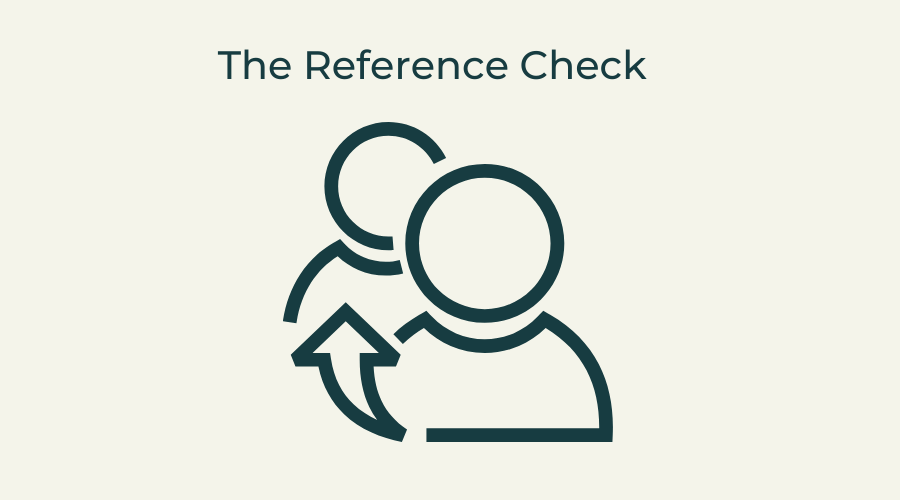
Human Resources
2 min read
Is the Reference Check still viable?
I was thinking about the old ways of recruiting and hiring the other day and began wondering about the long time practice of reference checks. I went to one of my favorite HR groups on Facebook and posed the following question to the human resource pros who frequent there. I asked, how important are reference checks to you as an HR person? Do they still matter in today’s landscape? In my previous recruiting jobs I found them rather useless but our CEO was insistent on doing them. In terms of anything useful coming form the conversations, my answer was almost always no. Reference Checks Still Worthy But there was a smattering of HR pros who came across the occasional gem; Christina told me “There was ONE time I am SO glad we reference checked. It was super awkward, but the candidate had stolen from their past company. Some things don’t hit the background check due to timing or agreements made outside of the legal system.” Amy agreed, “I still use them, I sometimes learn they were dishonest on the application. Oddly enough, family and friends they were employed by are sometimes VERY honest.” Rhonda added, “By doing references, I uncovered twice that the resume was completely false – no such number, no such name or record of said person as an employee. Other than that you generally get what you would expect people to say.” Larissa says it’s all about the way you approach the reference check. “If you know how to ask the right questions, they are a great resource” she said. Reference Checks Not Worthy The negative comments seemed to outweigh the positive ones in the thread. One commenter was very honest about it saying “It’s my least favorite part of working in HR.” Others chimed in with the following; Lacie said: “I am required to ask for them, but personally I feel they are a huge waste of time. My time, the candidates time, the person I am calling. The majority of the time companies tell you they are unable to disclose anything. Every now and then someone will give feedback but rarely is it ever anything unexpected.” Kay Jay: “Working at a financial institution, reference checks are part of our risk management policies. I do take them with a grain of salt we typically do 2, and if I get a negative reference I’ll try to do a third as well. They typically don’t carry enough weight to decide not to hire someone (unless we uncover something very serious) but can give us some information that makes it easier for our managers to quickly develop a good coaching relationship.” Janet didn’t hold back: “Useless. There is a “fear of being sued” so I don’t think HR people or managers are going to give truly honest feedback. If you do get the run down on how terrible someone is that makes me feel their review is more personal. The references listed are always going to be the people who will speak highly of the person. Mike adds: “Professional references are a crapshoot. Just because the candidate and the person listed say they worked together or that the latter was the candidate’s supervisor, doesn’t make it so. It can be hard to verify the alleged working relationships. Sometimes a follow up call to HR/Payroll can verify them but that is often a dead end. Sometimes a peek at the reference-provider’s LinkedIn will give you some idea of their credibility but not enough to prove or disprove their working relationship claims.” “I still use them”, one executive said in the thread. “I sometimes learn they were dishonest on the application. Oddly enough, family and friends they were employed by are sometimes VERY honest.” So there you have it. Are reference checks still a valid use of time? It seems to be a mixed bag according to this one little survey.
Continue reading
Human Resources
3 min read
Employee Mentoring Programs
One of the most popular questions applicants ask in an interview with an employer is often phrased as, ‘how are you going to invest in me?’ During the age of the great resignation, the great reshuffle, employees are dialing up their bare minimum standards. They are looking for not just wage increases and better benefits, but developed culture, humble leaders, and mentors willing to spend the time and effort in building them into the professional they want to be. Gone are the days where top employees are willing to remain comfortable with their current status. Young professionals are reaching for more. According to The Lorman Blog 76% of millennials believe professional development opportunities are one of the most important aspects of company culture. Companies lacking in mentoring and professional development programs are viewed as stagnant in the eyes of potential candidates. Without properly planned and executed professional mentorship and growth opportunities, an organization is guaranteed to lose out on the market’s top talent. Benefits of Employee Mentorship One benefit of a successful mentorship program is the development of a succession pipeline. Building a pipeline of succession can take the heavy lifting and financial burden from high level recruiting. When lower level new employees are giving the opportunity to grow, ultimately they are able to move up with proper training. Filling their lower level roles becomes the motive rather than constantly looking outside for high level positions that are often expensive to fill. Developing and mentoring new employees builds not only loyalty, but a personal investment. Employees that are being developed are heavily engaged in their own growth as well as the growth of the organization. Commitment to growing them encourages tenure and a desire to stay on board with the hopes of moving up as new skills are gained. Types of Employee Mentorship Programs One-on-One Initial onboarding is the perfect time to initiate a one-on-one mentorship pair. One-on-one mentoring can work like a supportive buddy system. Buddy systems are a great way to curb early turnover. Pairing new hires with an engaged tenured employee gives the employee a reliable source of information and community. Their buddy will help them adapt to the culture, learn the new aspects of the job, and be an encouraging peer during the beginning stages of employment. Professional Coaching For highly valued key employees companies can consider a professional coaching service. Professional coaching is typically an outside service that companies can utilize to develop employees they want to retain and grow into leaders. Professional coaches will perform a gap analysis, discuss career objectives, and plan a growth program to help an employee learn and mature desire skillsets. Often executives and managers are prime candidates for coaching. They may be lacking in leadership or communication and need an expert to provide teaching in that area. Professional coaching shows significant investment from the company in creating long term employee relationships. Upskilling Companies can sponsor employees to become more valuable by paying for additional schooling and certifications. Upskilling is the process of employees learning and mastering new skills, often related to technological abilities. Whether it is becoming an excel master, learning coding, developing social media competencies, or gaining an industry specific certification, upskilling helps employees and companies stay relevant. Employers offering investment in employees by sponsoring upskilling programs will have an upper hand in attracting top talent and retaining current employees. Career Path and Succession Planning Providing employees with career path planning and opportunities to be mentored into succession plans encourages them to engage in their own workplace goals. When open conversations are held about employee goals and long term career desires employers can support employees by aligning those goals with the needs of the company. Employers can use career paths and succession planning to build an internal candidate pipeline of loyal and knowledgeable employees. Reverse Mentoring As companies strive to stay relevant in a quickly changing and technologically developing workforce, they may want to consider implementing reverse mentoring. Reverse mentoring is when a younger employee mentors a seasoned executive. This is perfect for companies who have humble leaders that want to stay connected to their employees and are willing to learn from them. This bottom up approach can build a powerful rapport between organizational leaders and new employees. A culture of transparency and collaboration born out of reverse mentoring can initiate a powerful transformation and ultimately increase retention of both new and seasoned employees. Stephanie Mauney is freelance writer and content curator specializing in Human Resources.
Continue reading
Human Resources
1 min read
Managing Remote Employees 101
A new report by Insightful, a workforce analytics and productivity vendor, shares insights into the status of remote work, and how employers are dealing with managing their new crop of remote employees. Most companies are not dealing well with this new way of working. The Ongoing Challenges of Remote Employees The data also revealed an increased acceptance and adoption of remote work. But, it also found that many leaders still don’t feel fully equipped to operate optimally in this new environment. Just look at these eye-opening numbers; 63.91% of company leaders believe they don’t have the right tools to manage remote employee productivity. 71.45% of company leaders will allow remote work at least some of the time. 64.68% of company leaders will allow their employees to permanently work remotely or hybrid. 21.38% of company leaders reported that collaboration and communication are the biggest challenge when working remotely. 38.06% of company leaders believe that employees are less productive in a remote or hybrid environment. A 383% increase in the adoption of remote and hybrid work was seen among enterprise companies. Among a wide-ranging series of findings, almost two-thirds of respondents stated they don’t have the tools they need to effectively manage their team’s productivity when working remotely. In a further indication that monitoring remote employees’ workloads continues to present challenges, 38.06% of company leaders said that they believe employees are less productive when working remotely. And 21.38% of respondents cited communication and collaboration as the biggest challenges in a distributed work environment. Remote Work is Here to Stay Despite the challenges expressed, the report revealed that a resounding 71.45% of company leaders said they will offer remote work to employees in future at least some of the time. Further reinforcing that workplaces of the future will be distributed, the report also found that 64.68% of company leaders stated that remote and hybrid work will become a permanent fixture in their organization. They will learn to do it better over time. Insightful CEO Ivan Petrovic said: “This research strongly suggests that remote and hybrid work are here to stay, and that they will become the prevailing work models of the future.” “As remote work is still at a nascent stage, we anticipate that over time the challenges expressed by company leaders today will ease through the continued evolution of remote infrastructure and operating mindsets. That said, the research also shows there are ongoing challenges for company leaders when managing remotely.” Download the report here.
Continue reading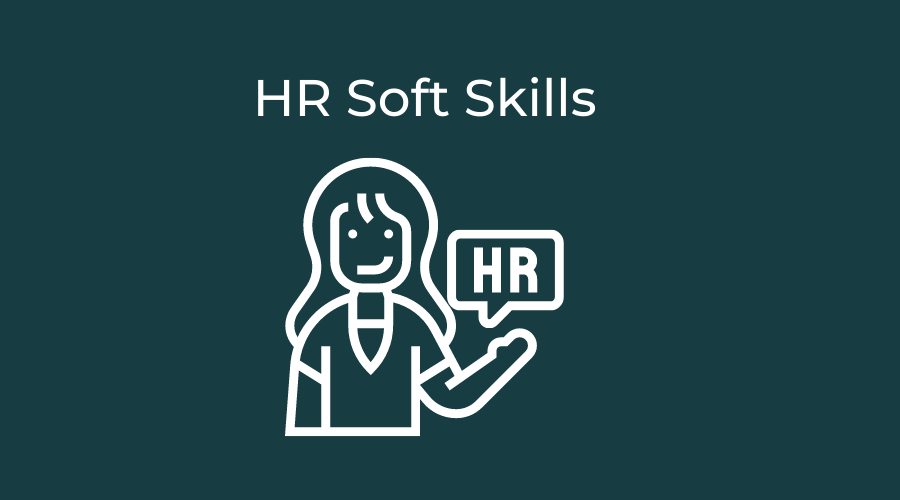
Human Resources
3 min read
Soft Skills for Human Resources
Well-developed skillsets, and the ability to communicate them clearly to employers and hiring managers, place candidates apart in the interview process and throughout a career trajectory. Navigating what skills to focus on in a particular position can be difficult. Discovering hard skills and developing technological abilities is a matter of research and practice. In contrast, soft skills do not always come naturally to every human resource professional. In today’s human resources world, soft skills are becoming increasingly desired to become a successful HR professional. Soft skills focus on social reliability and emotional intelligence. They can be the key differentiator between a qualified employee and an employee that grows themselves towards management. Superior HR professionals will have both hard and soft skills. Most of the time spent in human resources is in dealing with human interaction. Hiring, firing, managing, developing, and leading people are all essential to the job. This is the area where soft skills are going to enhance the ability to thrive. So, what are the essential soft skills? Below are eight soft skills every human resource professional could gain from growing. EMPATHY It is no mistake that empathy falls at the top of the list. The ability to feel and understand what employees are experiencing in any day-to-day situation both in and outside of work is essential. As a renowned author, speaker, and social work researcher, Dr. Brené Brown suggests: Empathy fuels connection Empathy is fuel to the humanness of human resources. It is the skill that draws HR into the progressive era by pressuring companies to see employees as more than a number. RELATIONSHIP BUILDING Commonly referred to as employee relations, the soft skill of relationship-building can be helpful not only in creating a culture of trust with employees but also in transforming HR into a strategic business partner in the eyes of c-suite executives. Authentic relationships create a culture of community within an organization—a culture of community leads to higher retention, lower turnover, cost savings, better performance, and ultimately increased revenue. COMMUNICATION Several of the top reasons employees leave an organization can be linked back to poor communication. Whether it’s the inability to be tactful in a difficult conversation, not providing clarity, or writing emails that need to be in-person discussions, well-rounded communication skills are crucial to the HR professional. ORGANIZATION Every day in HR is different. Moment to moment can often hold a variety of tasks. The ability to multi-task and stay organized while doing so is vital. When managing highly sensitive and confidential information whether on physical paper or electronically, organizational skills are required. Making a mistake due to disorganization could cause a major blunder or even break the law due to incompliance. CREATIVITY AND INNOVATION Human resources is a constantly changing field. Maintaining a spirit of creativity and strategy of innovation can keep an organization at the peak of its industry. Right now, human resources departments countrywide are facing an extremely tight job market, getting creative has been the only way to continue hiring amidst the great resignation. Innovation with ever-evolving policies, tech, and employee priorities keeps human resource professionals relevant. CRITICAL THINKING HR Daily Advisor describes critical thinking as an essential component of effective decision-making. It’s valuable at all organizational levels. In human resources, well-informed and data-driven decision making is key to becoming a valued member of organizational leadership. Those with developed business acumen know and understand the importance of providing advice that is not only backed by proof but also advances the goals of the company. Every decision is an opportunity to use critical thinking to become more effective and increase productivity. ADAPTABILITY and COMPOSURE If the last two years have shown the necessity of any skills, its adaptability. Human resource professionals often face unprecedented situations. To remain adaptable and maintain composure amidst high-stress conditions is essential for leaders in an organization. This unflappable representation has a downward effect of keeping the masses calm and open to change. LEADERSHIP Employees of the human resources department, even non-managerial, are likely perceived as leaders in the company. Leading by example is the most effective way to get employees on board with policies, culture shifts, and productivity. Leadership done well can be the accelerant for success in an organization. Healthy leaders who know both how to take charge with humility and serve employees with a gracious heart will be the catalyst for health in any company. Stephanie Mauney is freelance writer and content curator specializing in Human Resources.
Continue reading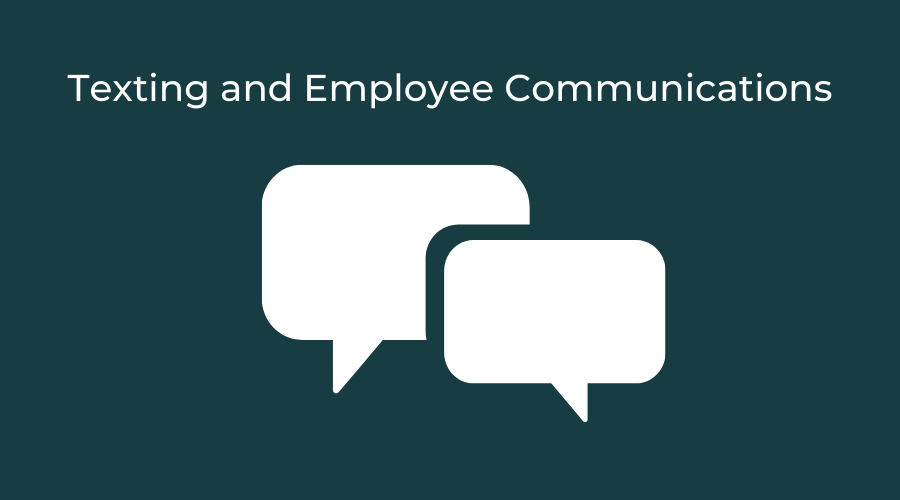
Employee Communications
2 min read
Employee Communication Texting Tips
We text with everyone today including friends, family, or coworkers. Many organizations are now relying on SMS texting in order to communicate with their employees. Fortunately texting is being baked into make recruiting platforms making life easier for both HR professional and employees. Staying “in the loop” has never been easier with tools like Emissary. We’ve written extensively about the use of texting in recruiting. But texting has a place in the human resources function as well. After all everyone receives texts. Over 90% of them are opened in the first 5 minutes. Americans spend nearly 6 hours per week texting. And its cost effective, costing just pennies per text sent. Employee Communications Text Use Cases Here’s how today’s employers are using text messages to communicate with employees. Weather Alerts: Keep your staff members in the know through texts that alert them about about closings and cancellations. Meeting Reminders: By sending meeting reminders via text you’ll enhance productivity, and eliminate scheduling conflicts. HR Policy Updates: Employees don’t read everything they should. Use texts to gently remind them of important policy news and changes. Texting ensures that your employees are held accountable and are constantly getting updates via texts with trackable links. Employee Feedback: Send surveys and questionnaires to help you gather feedback and learn about your workforce. Texting makes it easy! Employee Training: If you do any kind of training or onboarding, texting can aid in the learning process. Help prepare workers so they don’t feel overwhelmed, which could lead to an unhealthy work environment. Send resources and training material via text message. Open Enrollment: Every year HR emails out the new health plan information. Back up those emails with text reminders. Give employees plenty of lead time to evaluate their current plans and ask questions before the open enrollment deadline. Send texts with links to your open enrollment plan signup forms. Welcome New Hires: Onboarding new employees is a critical step in their future success in their role. Leverage text messages to excite them about their start date, new manager and team. For example as soon as they accept the job offer have their new boss reach out with a welcoming text message. Departmental Group Chats: In some cases it may even make sense to have group text chats for certain departments that need to stay in constant touch with team members. Texting Employees Just Makes Sense The bottom line: employee communication via text is the right thing for any deskless workers, especially those who don’t have easy access to email. In addition, tasks that take a lot of time, such as scheduling interviews, providing paperwork links, and sending notifications of deadlines can all be streamlined through text.
Continue reading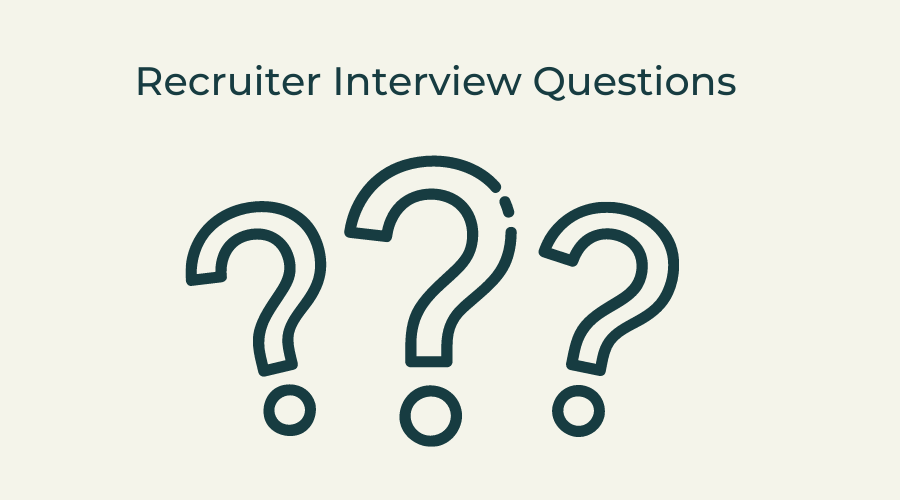
Recruiting
3 min read
Recruiter Interview Questions
The demand for high quality recruiters is on a major growth trajectory with the job market tightening. So called ‘unicorn’ recruiters can make a huge impact in a company’s ability to attract and hire top talent. What should your company look for in a good recruiter? Rock star recruiters have several qualities that hiring managers can look out for. Network Quality recruiters have a wide network of people they can tap into. You should look for someone that knows the right people and can pull from across the industry for candidate sourcing. A wide ranging network of not just connections but the right connections can be priceless in attracting talent. Hiring managers should ask candidates about their networking strategies, follow up on social media platform visibility, and ensure candidates know how to reach people in their industry. Skills Recruiters need to have certain qualities and skillsets in order to be successful. Companies looking to hire recruiters should look for people who exhibit excellent communication skills and attention to detail. They should have familiarity with the popular ATS, sourcing techniques, and Boolean search queries. They must have the ability to make authentic connections with candidates. Recruiters must be able to operate well under pressure. They must be able to think critically and exude confidence. Specs Finding a great recruiter means looking for someone with a creditable history of successful hires. Hiring managers will want to look for solid quantifiable proof either in a resume or during the interview process. It’s important to know what recruiting load the candidate has experience with. Are you looking for an applicant used to filling one or two high level positions or someone who has experience sourcing for high volume positions? Business Acumen Knowing and understanding the innerworkings of the business is essential for recruiters to be successful. Organizations should be searching for candidates that have experience with the industry they will be sourcing for. Understanding how the business is successful, where the business revenue stream comes from, and the business growth strategy can make a recruiter more efficient in bringing in the right candidates. Recruiter should be subject matter experts in the industry they are working for. Recruiter Interview Questions Recruiters are well versed in the interview experience. Catering an interview specifically to an experienced recruiter is important. Below are example questions that may prove helpful in gaining valuable insight while interviewing recruiters. Experiential Questions How many positions are you typically filling at any given time? What was the average stick rate of candidates you helped hire? What is your relationship like with your hiring managers? What industry are you most familiar with recruiting for? Situational Questions Describe a time when you had a great working relationship with a client. What made the relationship thrive? Tell me about a time a successful candidate declined an important role. How did you pivot to fill the position? Describe how you respond when you must let a candidate down. When was a situation where you disagreed with the hiring manager’s decision? How did you react? Tell me how you would pitch our company to a highly desired applicant. Describe a time you used data to improve your ability to recruit successfully. Process Questions Describe your process of building a candidate pipeline. How has your recruiting process changed over your years of experience? Tell me about your method of keeping track of applicants and your follow up procedure. Describe a time when your typical sourcing strategies were not working. How did you fill the role? What tools and technology do you utilize to reach, communicate with, and update applicants? Where do you look to make connections in your industry and widen your network? How do you keep up with industry trends and the latest recruiting methodologies? Personal Questions Do you have a personal brand? If so, what is it and how are you building a network subscribed to you? What do you love about being a recruiter? What gives you joy to wake up and start work? What excites you about the future of recruiting in our industry? How do feel building relationships is tied to being a successful recruiter? Average Salary for Recruiters How much does a recruiter make? Depends on what type of recruiter you are. Corporate recruiters are generally salaried employees while those that work for staffing agencies typically work on commission. If they place a person in a job the employer pays the agency a percentage of yearly salary, anywhere from 10-30%. A quick check of Indeed’s salary pages show the average salary for a recruiter is $51,489. Stephanie Mauney is freelance writer and content curator specializing in Human Resources.
Continue reading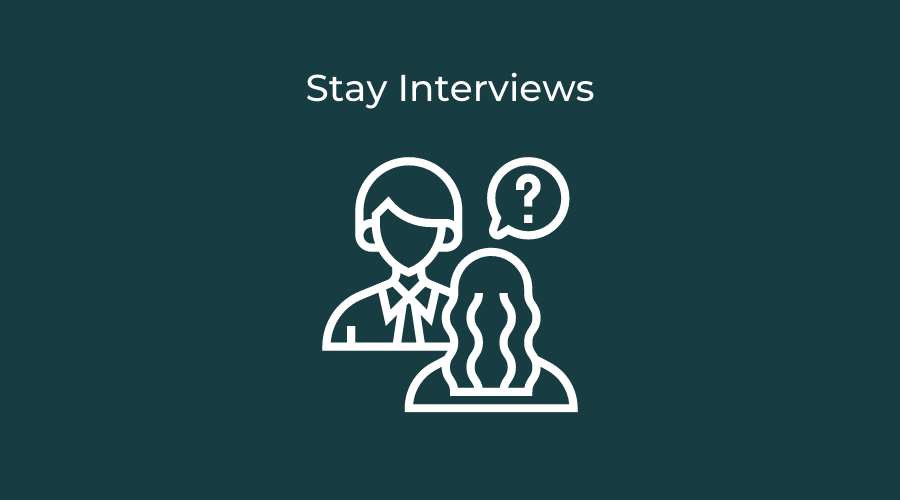
Recruiting
3 min read
Stay Interviews 101
Employees are increasingly looking to work for companies who go above and beyond to keep them engaged. Employee engagement levels may be one of the best indicators of employee satisfaction and future retention. There are multiple avenues employers can take to get employees talking about their professional desires and level of current happiness with the employer. One way to gauge employee satisfaction is to conduct stay interviews. What is a Stay Interview? A stay interview is an honest two-sided conversation an employer has with an employee with the goal to encourage and gain feedback from the employee in order to keep them retained. Stay interviews have gained traction and popularity over the last couple of years as the job market tightens and the ‘great resignation’ continues. Recruiters are aggressively reaching out to passive candidates. For employers who want to make sure their employees know why they want to be at their current job, stay interviews may be a great tool. To be clear, a stay interview is not the conversation that is had while an employee has one foot out the door. It is not the talk management has with an employee to negotiate them not leaving. It is pre-emptive to that. It is a preventative step with hopes to avoid that possibility. Who Should Use Stay Interviews? The stay interview process is not an optimal strategy for every company. Organizations with trust issues, failing culture, or workplace toxicity will not want to open up two- way conversations for employees to give feedback. They would need to focus on primary objectives initially. Stay interviews are perfect for companies with well established trust, open door management, and stable retention. Open communication must already be an established value in order for the stay interview to be successful. Being Prepared for Stay Interviews Before conducting the stay interview, it would be helpful to complete a needs analysis to determine goals in mind. The goals will be a necessary benchmark for an evaluation following the stay interviews to understand whether they were effective or not. It is always important to have a process in place prior to implementing a new engagement or retention strategy, otherwise there would be no way of knowing whether it made any difference or not. Employers must have a plan in place to evaluate responses that need action. Companies preparing for stay interview must be ready for the challenges that may come with asking employees for transparency. Management must be willing to hear about difficult and complex issues that may arise. Unpleasant realities may come to the surface that are unexpected. Managers may have to accept accountability for situations that employees are dissatisfied with. The interviewer conducting the stay interviews must be mature, possessing advanced relational and communication skills. They must be an active listener, ready and eager to make employees feel heard. How to Conduct a Stay Interview? Prior to beginning, the structure of the interview should be determined. Decide who will be involved in the process. How will interviews be announced? Providing advance notice and preparation advice will allow employees to provide honest feedback without being caught off guard. Although stay interviews should be conducted in an informal conversational manner, the questions should be predetermined and structured. Interviewers should be well trained on how to conduct the interview properly. Conduct all the interviews within a few weeks of each other to obtain the most up to date response. The interview should be no longer than 30 minutes. For employees who seem nervous, interviewers should work hard to be vulnerable and help put the conversation at ease. Be sure to thank employees for their time and willingness to share openly. Offer them an opportunity to follow up should there be anything else they feel needs to be shared in the future. What questions to ask? Below are example questions that can be asked during the interview. Always begin the conversation with an opener that promotes casual open communication such as: “Thank you for taking the time to speak with us. This is an informal open conversation. I’d like to gain more understanding about how you feel your job is going so that I can support you and help this be a great place to work.” “What makes you look forward to coming to work?” “In what ways do you currently feel professionally challenged?” “How comfortable are you with your current workload?” “What do you like most and least about coming to work here?” “How do you feel about the impact of your work?” “If you could change anything about working here, what would it be?” “Do you feel recognized and appreciated for your contributions?” “What do you see yourself doing with our company over the next 5 years?” “In what areas could you learn more?” “What can management do more or less of to create increased satisfaction for you?” “Over the last year, what has caused anxiety or frustration for you here?” “What would be your dream job here?” Stephanie Mauney is freelance writer and content curator specializing in Human Resources.
Continue reading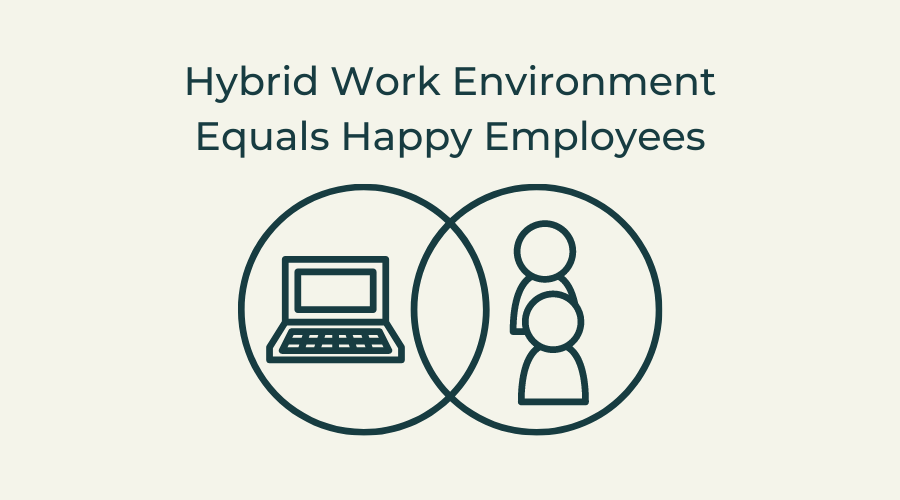
Human Resources
2 min read
Hybrid Work Environment Equals Happy Employees
Hybrid work is set to become the norm in corporate America. A recent survey by employee listening company Perceptyx shows that a hybrid workplace is superior to remote work on a host of well-being measures. Hybrid employees, defined as those who work at both in-person and remote workplaces – report greater improvements in work-life balance and mental health, more time for exercising, and a greater intention to stay at their current company because of this kind of work flexibility. Hybrid Employees Are More Efficient There is a disconnect happening however. While many managers believe having workers at the same physical location strengthens their relationships, hybrid employees are reporting the opposite in this survey of 1,400 working Americans. Only 1/3 of fully remote workers and fully in-person workers say they have stronger relationships in the office compared to last year. More than half of hybrid workers (53%, compared to remote workers’ 34%) report the same thing, indicating that it’s not how much time they are spending with in-person coworkers, but how purposeful those in-office interactions are. Measures of burnout – closely linked to churn rates – are also much better for hybrid employees. These workers are 50% more likely to look forward to starting their workdays and feeling like they make a meaningful contribution to their workplace. They are nearly twice as likely to feel energized by their work than either their fully remote or fully in-person counterparts. “The key to making hybrid work successful is autonomy. Dictating certain days on-site is just as ineffective as requiring 100 percent in-person. When employees get that autonomy, they thrive,” said Emily Killham, Director of Research and Insights at Perceptyx. “Organizations who want to compete for talent will have to find creative ways to offer that autonomy, even for on-site jobs. Flexibility in work scheduling gives employees the room they need to manage their lives and be more engaged during the work day.” Hybrid Work Does Have Gaps Perceptyx also found that the gap between how managers and employees view productivity and their physical location has only grown wider. 45% of leaders think their team members’ relationships will grow stronger when the whole team is at the same location, while only 17% of employees think the same. I can see why, being in person helps to build trust which is harder when fully remote. As they found out last year in this study on officism, managers and leaders show a bias toward believing those in the physical workplace are more productive. Compared to individual contributors, managers are three times as likely, and leaders are five times as likely, to say that remote workers are less productive than in-office employees. This contradicts what the employees themselves are reporting – hybrid workers were the most likely of all employees to say their own productivity is up, while in-person workers were most likely to say their productivity is lower than the year before. Faced with evidence that in-office workers are not necessarily their happiest employees, many companies are reconsidering their return-to-office plans. Some Human Resources departments are no longer asking when or how the return-to-office plans will work, but whether they should be implemented at all. Just ask Apple employees. They are threatening to quit over a new hybrid schedule the computer giant wants to implement. “These findings don’t mean that every employee must have a remote option, but it does point the way on how to keep employees engaged,” said Killham. “Officism clearly still exists, especially among managers and leaders. So organizations must start tracking development opportunities, performance ratings, and promotions based on the physical location of their employees. That way they can be prepared to correct any bias that the data shows and strive toward an equitable workplace.”
Continue reading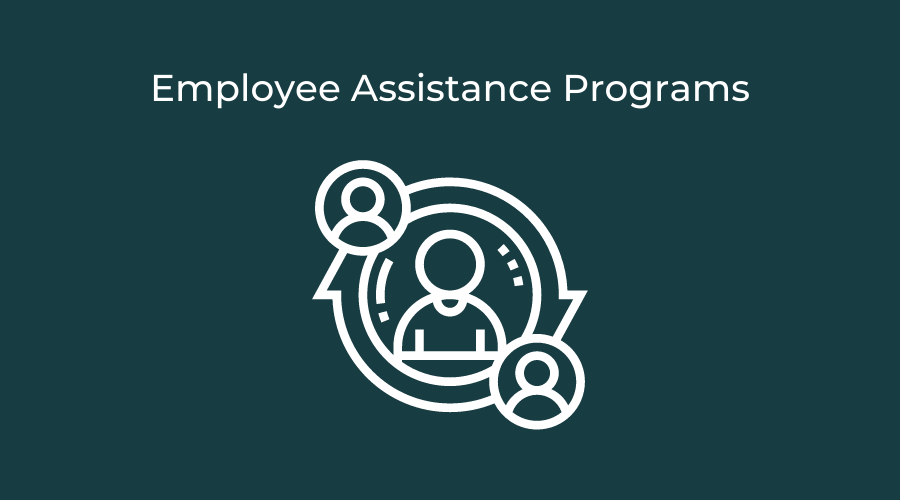
EAP
3 min read
Employee Assistance Programs for Holistic HR
Historically, employee assistance programs (EAP) address the needs of employees involving their ability to perform their job. They are often voluntary and offer some level of counseling aid, whether directly or through referrals. If the employer offers decent benefits, then the EAP could extend to every member of the employee’s family. An EAP’s intent is that a happy and healthy employee makes a productive and engaged one. However, EAPs often fall short. They either do not address the holistic needs of an employee altogether or the assistance provided isn’t sufficient. There’s also the possibility that employees aren’t even aware of the program and what assistance is provided; therefore, the program goes overlooked and underutilized. I think it’s time to revamp the employee assistance program and bring it into the year 2022. Here’s why. Employees are living with unaddressed trauma that is usurped by more trauma daily. Social media has given us the ability to view news and trending topics at our fingertips, so when one part of the world experiences something we all collectively experience it. And while a secondary experience isn’t the same as directly experiencing an event, that doesn’t mean that we all don’t collectively walk around with the heaviness of the world on our shoulders. While at work we’re expected to compartmentalize that heaviness away, but at what expense? What do employees want in an employee assistance program? A great EAP addresses all the needs of the employee. A quick way to assess whether your program is up to par is to evaluate whether your EAP provides relief from what’s happening globally. Does your program address the grief that employees are facing from loved ones passing from COVID? What programs address the weight gain some employees have put on since the pandemic started? What about the PTSD employees may be facing from the war in Ukraine? How are you alleviating the financial stress employees are facing with rising inflation? Are you requiring employees to return to the office but not providing childcare assistance? Most EAPs will refer an employee to an outside source. The downside to this is that the employee still must do their due diligence to choose the source that best fits their needs and there’s typically a cost associated with the service. If the service is associated with insurance, there may be a limit on how often the employee can use that service. Is there a better way to meet the needs of employees? I think there is. I think there’s a better way to address the needs of employees while eliminating employee costs for additional services. The solution is to bring as many services as possible in-house. What does that mean? That means that instead of offering counseling referrals, hire a therapist to work onsite or virtually. That therapist, or more depending on your headcount, will provide free confidential sessions to your employees. If you’re requiring your employees to work onsite, then provide an onsite daycare. Do you have employees that want to be healthier? Add a nutritionist and personal trainer to your roster. Do you have employees who want to process their trauma, in addition to therapy? Offer trauma-informed yoga. Do you offer professional development coaching to your executives? Extend that to all employees. Maybe an employee doesn’t want a coach but wants to grow professionally. Offer them free Udemy courses. What if they want other resources to learn? Then offer them free Kindle books. Is your employee feeling the added financial stress from rising prices? What if your employee is now a part of the sandwich generation and they’re caring for children and parents at the same time? Offer them a financial coach to review their budget to help them make better financial decisions. Work tends to address the social aspect of holistic health, but rarely provides avenues for the physical, mental, emotional, and spiritual aspects. When we start addressing employees’ full needs, we give space for employees to truly be engaged and productive at work. A wonderful place to start when revamping your EAP is to survey employees to gauge their main stressors and then build programs to address them. You’ve revamped your employee assistance program, now what? One of the biggest reasons EAPs aren’t successful is that most employees aren’t sure what services are offered. This means you’ll have to consistently market your EAP to your employees. It is also helpful when leaders advocate for programs by sharing how they’ve found success with using EAP. This could help employees who may be hesitant to try a program for one reason or another. Lastly, with the new and improved EAP, ensure your employee can take full advantage of the programs by allowing them time throughout the workday to use the programs they need. With the addition of meeting them where they need it most, you also offer them the ability to truly break away from work, which should increase their productivity when they return to work. A successful EAP has the potential to address company-wide issues from employee burnout to decreased engagement and more. Providing holistic assistance not only helps the individual employee but will increase the bottom line for the entire company. In short, revamping your EAP provides a win/win for everyone. Timara Nichols has 15+ years of experience, specializing in human resources, operations, and customer success. She holds the following certifications – aPHR, Certified ScrumMaster, and Meta Certified Community Manager.
Continue readingAbout Emissary
Emissary is a candidate engagement platform built to empower recruiters with efficient, modern communication tools that work in harmony with other recruiting solutions.
Stay in the loop!
Subscribe to our bi-weekly newsletter and keep up to date with the latest Recruiting and HR tips and trends.
By clicking send you’ll receive occasional emails from us.
